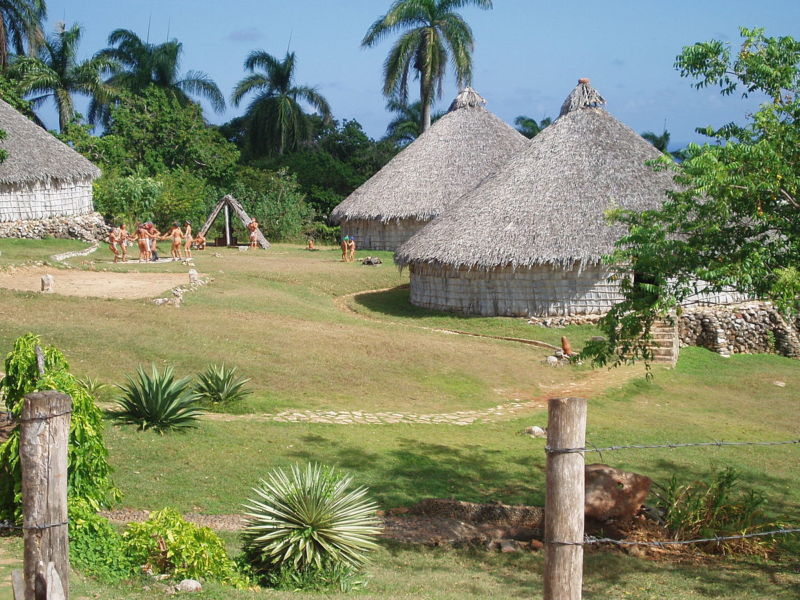Anthropology
Related: About this forumAncient DNA sheds light on what happened to the Taino, the native Caribbeans
A new DNA study explores where the extinct Taino came from and where they went.
KIONA N. SMITH - 2/19/2018, 2:55 PM

Reconstruction of a Taino village in Cuba.
The Caribbean was one of the last parts of the Americas to be settled by humans, although scientists don’t agree on when the first settlers arrived or where they came from. Some argue that people probably arrived from the Amazon Basin, where today’s Arawakan languages developed, while others suggest that the first people to settle the islands came from even farther west, in the Colombian Andes.
“The differences in opinion illustrate the difficulty of tracing population movements based on a patchy archaeological record,” wrote archaeologist Hannes Schroeder of the University of Copenhagen, Denmark, and his colleagues. Schroeder’s research team has a new study on the genetics of the long-lost Taino people, which gives some clear indications of their origin and where they went after European colonization.
Complex social networks linked the islands
The Bahamas weren’t settled until 1,500 years ago. The people who settled there are known as the Lucayan Taino, and they and the other Taino communities of the Caribbean were the natives who met the first Spanish colonists in 1492. At the time, the Taino were thriving; Spanish priest Bartolomé de las Casas estimated that about 600,000 people each lived on Jamaica and Puerto Rico, with as many as a million on Hispaniola. That didn’t last long; by the mid-16th century, smallpox and slavery had driven the Taino to the brink of extinction.
But the story, it turns out, is more complicated than that. Archaeologists found three relatively complete skeletons in Preacher’s Cave, a site on the northern end of Eleuthera Island in the Bahamas. Alongside the skeletons, they also found a single tooth, which didn’t clearly belong with any of the three skeletons. Schroeder and his colleagues got permission to sequence DNA from the tooth, which radiocarbon dating showed was more than 1,000 years old. That’s at least 500 years before European contact, meaning the tooth must have belonged to a Lucayan Taino woman who lived on the island between 776 and 992 CE.
More:
https://arstechnica.com/science/2018/02/natives-of-the-caribbean-wiped-out-during-colonization-left-dna-behind/
Judi Lynn
(160,523 posts)19-FEB-2018
Researchers have produced the first clear genetic evidence that the indigenous people whom Columbus first encountered in the New World still have living descendants today
ST JOHN'S COLLEGE, UNIVERSITY OF CAMBRIDGE
A thousand-year-old tooth has provided genetic evidence that the so-called "Taíno", the first indigenous Americans to feel the full impact of European colonisation after Columbus arrived in the New World, still have living descendants in the Caribbean today.
Researchers were able to use the tooth of a woman found in a cave on the island of Eleuthera in the Bahamas to sequence the first complete ancient human genome from the Caribbean. The woman lived at some point between the 8th and 10th centuries, at least 500 years before Columbus made landfall in the Bahamas.
The results provide unprecedented insights into the genetic makeup of the Taíno - a label commonly used to describe the indigenous people of that region. This includes the first clear evidence that there has been some degree of continuity between the indigenous peoples of the Caribbean and contemporary communities living in the region today.
Such a link had previously been suggested by other studies based on modern DNA. None of these, however, was able to draw on an ancient genome. The new research finally provides concrete proof that indigenous ancestry in the region has survived to the present day.
More:
https://www.eurekalert.org/pub_releases/2018-02/sjcu-sit021518.php